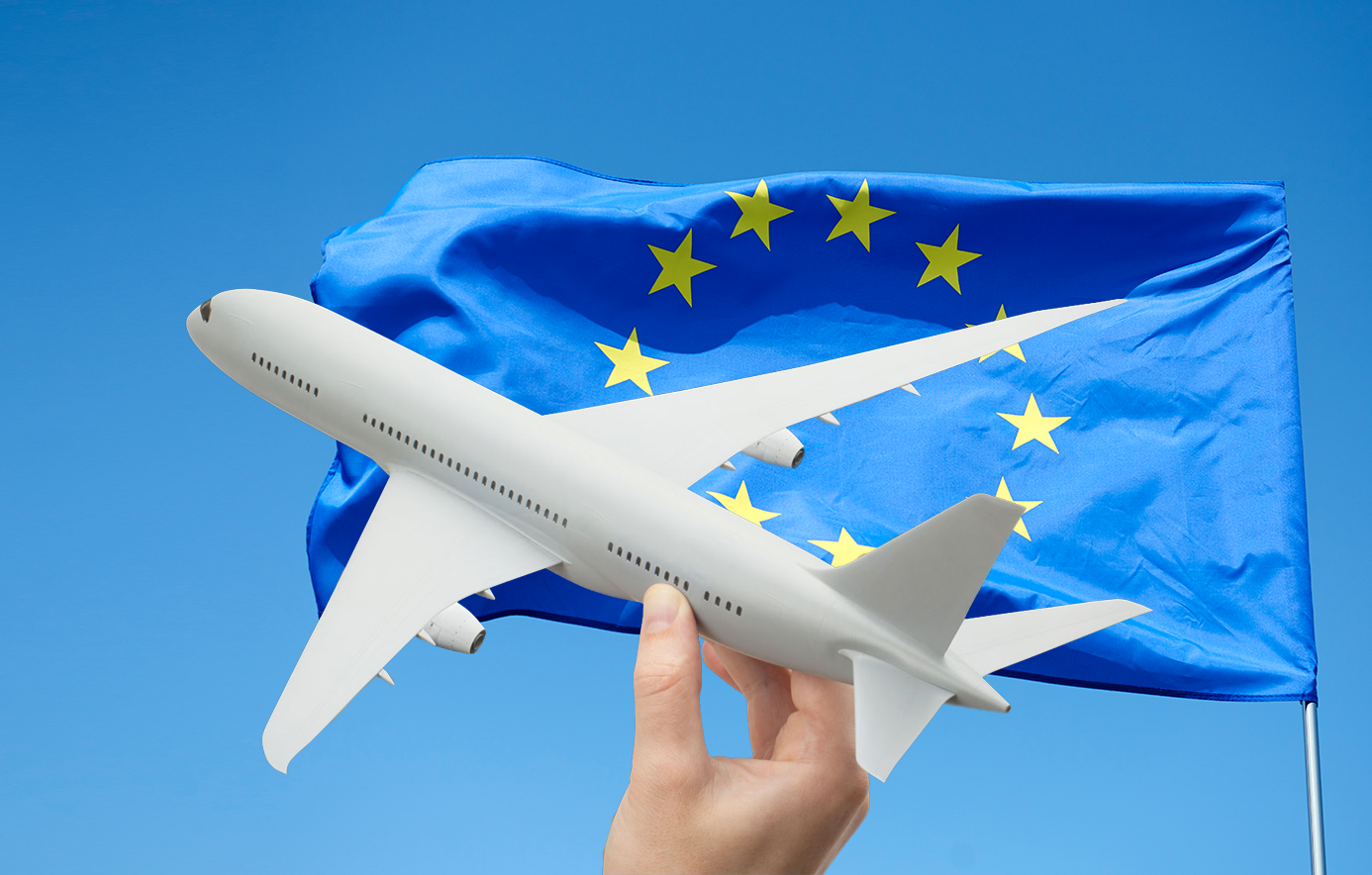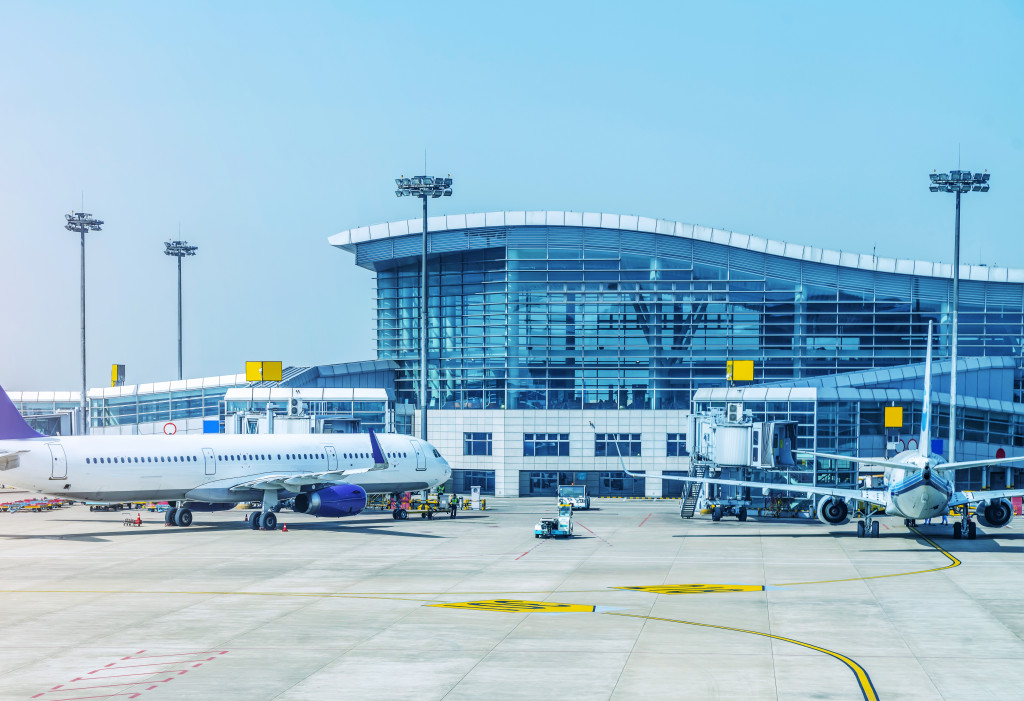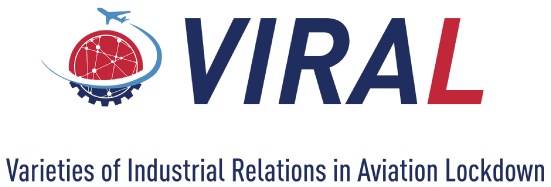How can social partners and states relaunch air transport in the EU and put the industry on sustainable footing from a social, economic and environmental perspective?
Answering this question is the core purpose of the VIRAL Project.

Overview
Aviation was under significant economic stress heading into the COVID-19 pandemic, The economic conditions of the air transport sector before the COVID-19 crisis in Europe were precarious: many legacy airlines were burning through capital, operating on extremely tight margins, and facing stiff competition from low cost carriers whose business models and cost structures seem to have placed them at a competitive advantage. Then the coronavirus pandemic hit, causing the biggest drop in the aviation sector in its history.
Studying how aviation responded to this crisis is critical to the improvement of living and working conditions in the EU: aviation is a critical sector for the European economy: pre-Covid, air transport (directly and indirectly) supported 12.3 million jobs and generated 4.1% of European GDP. And aviation plays a special role in guaranteeing territorial continuity and the free movement of people and goods within the EU. Yet few sectors have seen greater liberalisation than air transport. It was also one of the sectors most dramatically effected by COVID.
Social Dialogue & The Role of the State in Aviation During COVID
In order to make recommendations for the relaunch of aviation post-pandemic, researchers conducted a comparative study of the impact of COVID-19, and how Industrial Relations (IR) responded, in Denmark, France, Germany, Ireland, Italy, Poland, Spain. The full results are documented in this report, available on the VIRAL website. (The full report includes detailed descriptions of each country studied.)
While responses to COVID 19 varied widely across the EU member states, in all cases the role of the state was strengthened. Regarding air transport, actors benefited from the general measures aimed to support employment and business during the pandemic. With limited exceptions (like Denmark), there were no aviation-specific rescue packages. However, states (with the exception of Ireland and Poland) did intervene, through existing mechanisms, to provide financial support to airports and legacy airlines which began to haemorrhage cash during the lockdown (to cite one dramatic example: at one point Lufthansa was losing 1 million euros every hour.) Support took different forms, including loans and capital injections, and sometimes included specific conditions.
Despite the massive state intervention in the economy, states, vis-à-vis aviation, were reluctant to use their power to strategically reposition the role of social dialogue in the sector. Instead, social dialogue largely became the instrument by which workers, in a short period of time, conceded much, to support the sector. This response, while perhaps helpful to airlines and airports in the short-term, would place European aviation in a difficult position once the quicker-than-anticipated recovery of passenger volumes began. Lack of personnel led to significant disruptions, beginning in 2022, in most major European hubs. (One notable exception is Italy, which appears to have fared better in the face of the recovery, because of an economy-wide ban on layoffs during the worst part of Covid, social dialogue and government intervention to shore up sector-specific wage and employment supports to prevent an exodus of workers from the sector.)
Relaunch or Back to the Future? EU Aviation Post-Lockdown
Researchers note two important trends across members states in relation to aviation: on the one hand they see a convergence at the European level, driven by liberalisation and pressures from low cost carriers on the legacy airlines. On the other hand, in terms of social dialogue, they note a reversion to the “old normal” in terms of social dialogue.
Returning to the old normal is unlikely to achieve the kinds of economic, environmental and social outcomes that the European Union has prioritized for the sector. Owing to liberalisation, pressures from Low Cost Carriers (LCCs) and the nature of the industry, aviation is probably the most internationalised sector of the economy: with the exception of airport infrastructure, labour (cabin crew, pilots, etc) as well as the means of production (airplanes) are highly mobile. This fact places major strains on a model of industrial relations based primarily on company-level bargaining.

However, a number of factors point to the possibility of an alternative vision for the future of aviation:
- The state continues to play a significant role within the sector, both through former flagship carriers and a continued ownership stake in airports
- Higher union densities with respect to national averages
- High collective bargaining coverage
Given this reality, policy-makers and social partners could decide to co-create a “new normal,” one that:
- Strengthens the capacity of social partners to engage in dialogue and bargaining
- Reinforces the importance of sectoral bargaining (or bargaining that includes the whole “value chain”)
- Increases policy, regulatory, legal and IR coordination at the EU level, given the inherently multi-national nature of the industry
- Uses social dialogue to jointly-manage change in the industry, particularly as it relates to employment and environmental impact


